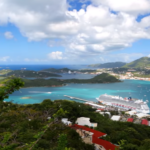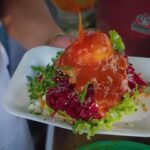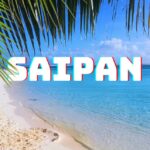As an intrepid globe-trotter, I’ve experienced the warm embrace of cultures across continents, tasted the myriad flavors from bustling city streets to remote countryside kitchens, and found unforgettable stories etched into the very fabric of Earth’s diverse landscapes.
Yet, it was the tranquillity and authenticity of Tinian, a small island in the Commonwealth of the Northern Mariana Islands, that captivated me for a full six months in 2023.
Here, I basked in the friendly embrace of its humble community and rediscovered the enchantment of pristine natural beauty. Let’s dive in as I unravel the mystery and allure of this under-the-radar paradise.
Tinian’s History
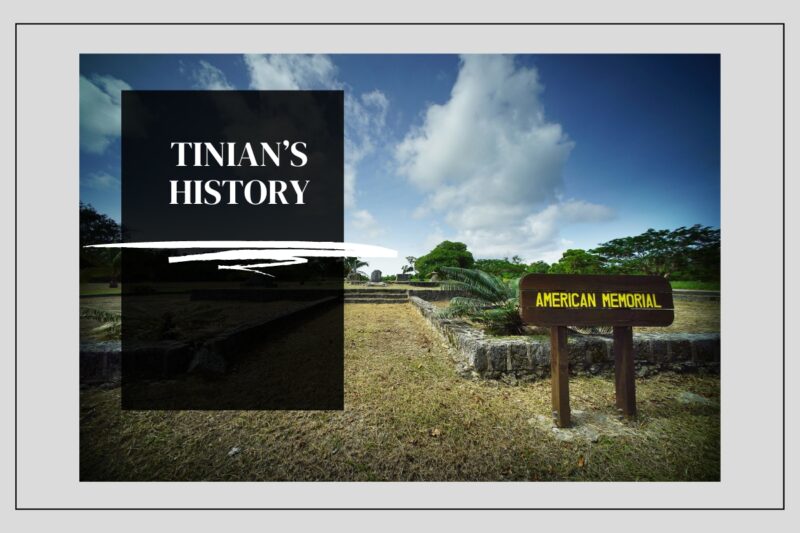
This island, though tiny and often overlooked, carries a hefty weight of historical significance.
The Prehistoric Times & Indigenous Chamorro Culture
Tinian’s story stretches back to the prehistoric era, its pages filled with rich Chamorro culture and ancient traditions. Home to the indigenous Chamorro people for over 4,000 years, Tinian is dotted with remnants of this proud civilization.
Take a walk through the island’s luscious jungles, and you’ll encounter latte stone ruins – unique megalithic structures that supported ancient Chamorro homes. Remarkably, Tinian’s House of Taga is home to the largest known standing latte stone, a testament to the architectural ingenuity of the Chamorros.
From weaving coconut leaves to crafting shell jewelry, Chamorro traditions still thrive among the locals. During my stay, I had the privilege of learning coconut leaf weaving from one of the island’s elders – an intricate skill that has been passed down through generations.
World War II & The Atomic Bomb
The second chapter in Tinian’s history is as dark as it is poignant, spotlighting the island’s significant role in World War II. The peace of this Pacific paradise was shattered in 1944 when the US armed forces took control of the Japanese, converting it into the largest airbase in the world at the time.
Here, the Enola Gay took flight, carrying with it the devastating “Little Boy” – the atomic bomb dropped on Hiroshima. Visiting the now silent and grass-covered runways gives a stark reminder of the past. Nearby, an unassuming bomb pit, now marked with a commemorative plaque, once held the very device that wreaked havoc in Hiroshima. It’s a sobering and surreal experience that brings history to life in a profound way.
Natural Wonders to Explore
Tinian’s idyllic landscapes, from pristine beaches to lush jungles, offer a bounty of natural beauty.
Beaches & Blue Hole

Unsurprisingly, one of the island’s biggest draws is its stunning, untouched beaches. The island’s coastline is adorned with a string of pristine beaches that serve as your personal retreats. Whether you’re sunbathing on Tachogna Beach, exploring the rocky outcrops of Kammer Beach, or snorkeling in the clear waters of Unai Chulu, the island’s beaches are the perfect spots to relax and unwind.
A particular highlight was the ‘Blue Hole’ – a natural sea cave carved into the cliff face. Snorkeling here offered an exceptional view of the marine life, with vibrant corals and exotic fish flitting around in the crystal-clear waters.
Hiking Trails & Wildlife

For the more adventurous, Tinian’s lush landscapes offer a variety of hiking trails with an abundance of wildlife to discover. The hiking trails in Tinian are every nature lover’s dream, each trail offering a unique perspective of the island’s breathtaking landscapes.
My personal favorite was the Suicide Cliff trail, where I enjoyed panoramic views of the turquoise waters meeting the azure skies. While hiking, be prepared to spot exotic birds like the Mariana Fruit Dove or the Bridled White-eye. And keep an eye out for the rare Marianas flying foxes that swoop in during the evening hours.
Food & Beverage
Tinian’s gastronomy is a tantalizing fusion of indigenous Chamorro flavors and global influences, creating a culinary experience that is both diverse and unique.
Traditional Chamorro Dishes
Tasting traditional Chamorro cuisine is a must when visiting the island. Chamorro barbecue, or ‘kelaguen,’ was an absolute treat for my palate. Made from various types of meat marinated in soy sauce, vinegar, and local spices, it is usually served with ‘red rice’ cooked in achiote seeds for a distinctive flavor and color.
I also got a taste of ‘Tinaktak,’ a hearty dish prepared with ground beef, coconut milk, and fresh local vegetables. Chamorro ‘Empanada’, filled with rice, meat, and veggies, is another crowd-pleaser.
Drinks and Local Brews
Imbibing local brews is an integral part of experiencing Tinian culture. I was lucky enough to be in Tinian during the island’s annual ‘Coconut Festival.’ During this event, locals showcase a variety of drinks made from versatile coconuts, such as coconut wine and a traditional fermented drink called ‘Tuba.’
If you’re a beer enthusiast, don’t miss trying the local craft beer ‘Marpo Brewing.’ Brewed right on the island, their selection boasts a unique blend of local ingredients and traditional brewing techniques.
Local Events & Festivals

Tinian’s vibrant local events and festivals offer a great opportunity to mingle with the locals and learn about their traditions.
Pika Festival
One of the key events in Tinian is the annual ‘Pika Festival.’ Pika Festival is a celebration of all things spicy. Dedicated to the ‘donni,’ or chili pepper, this event features a host of competitions like the spiciest dish, the best chili pepper plant, and even the most resilient chili-eater.
The locals’ enthusiasm is infectious, and the abundance of spicy treats was a delight for a spice-lover like me. Also, this festival showcases traditional Chamorro dance and music performances, offering a taste of the island’s rich cultural heritage.
Tinian Hot Pepper Festival
Another not-to-miss event is the ‘Tinian Hot Pepper Festival.’ Much like the Pika Festival, the Hot Pepper Festival pays homage to the island’s most fiery fruit – the hot pepper. However, this event has a more international flavor, attracting competitors from all over the world for its renowned hot pepper eating contest.
Besides the contest, the festival also features beach activities, live music, cultural demonstrations, and fireworks. It’s a thrilling experience, with the festive ambiance heightened by the island’s scenic beauty.
Travel Tips
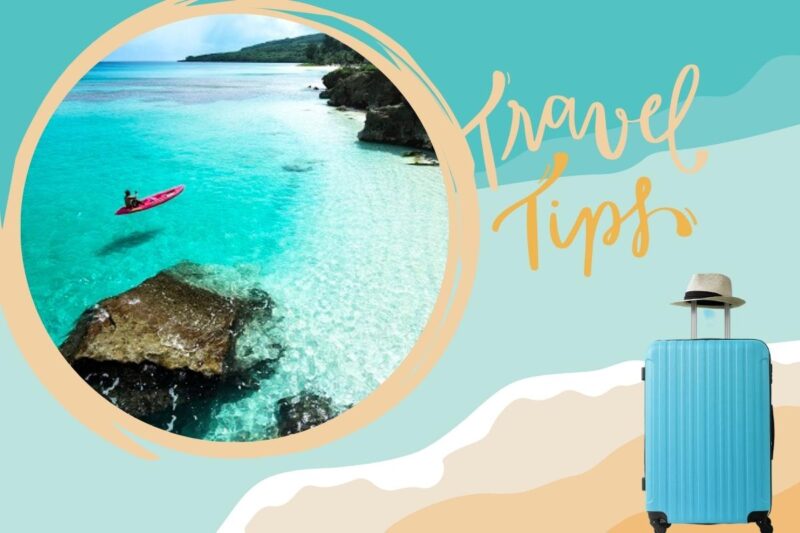
Here are a few practical tips that helped make my stay in Tinian memorable and hassle-free.
Best Time to Visit
Choosing the right time to visit is crucial to fully enjoy Tinian’s charm. The best time to visit Tinian is during the dry season, which runs from December to June. This period sees less rainfall, allowing you to explore the island without any weather disruptions.
However, if you’re keen on experiencing the local festivals, plan your visit around the Coconut Festival in August or the Pika Festival in November.
Transportation
While exploring Tinian, remember that local transportation options can be limited. Given the island’s small size, car rentals are the most convenient way to get around. Renting a car will give you the freedom to explore at your own pace and visit the more secluded attractions.
Alternatively, bicycles are a popular choice among the locals, and they offer a more leisurely way of getting around. During my stay, I thoroughly enjoyed cycling around the island, feeling the warm tropical breeze while soaking in the breathtaking scenery.
Outdoor Activities

Beyond its history and natural beauty, Tinian offers a wealth of outdoor activities.
Water Sports
The island’s clear blue waters and rich marine life make it an excellent destination for water sports. For scuba diving and snorkeling enthusiasts, Tinian is nothing short of a paradise. The island’s rich coral reefs are home to a myriad of marine species.
At Tinian Grotto, a popular diving spot, I encountered sea turtles, reef sharks, and a vibrant array of tropical fish. Surfing is another popular activity. While the island may not be a world-famous surf spot, the waves at Tachogna Beach are perfect for beginners and intermediate surfers.
Bird Watching
For nature enthusiasts, Tinian’s lush forests offer excellent opportunities for bird-watching. Tinian is home to several unique bird species, some of which are endemic to the Mariana Islands.
My favorite spots for bird-watching were the forests around Marpo Valley, where I spotted the bright, green-and-white Mariana Fruit Dove and the Mariana Kingfisher, with its striking blue and orange plumage.
Accommodation
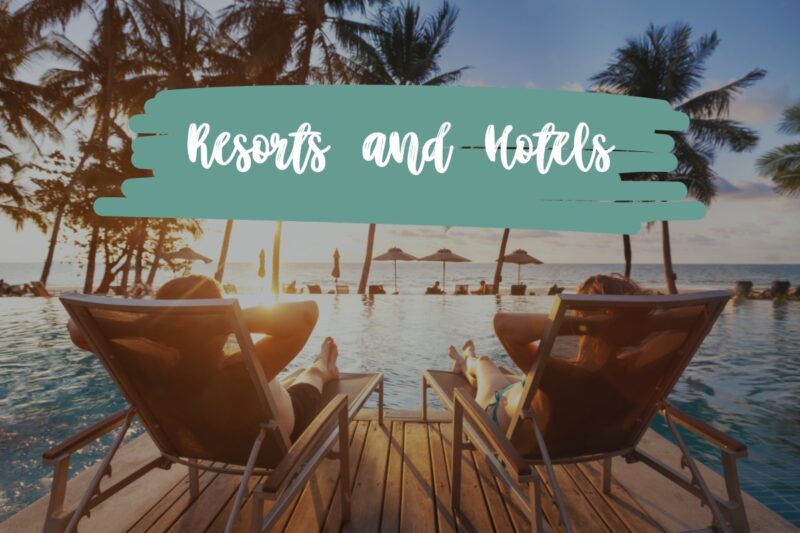
From beachfront resorts to quaint guesthouses, Tinian has accommodation options to suit all budgets.
Resorts and Hotels
If you prefer a bit of luxury, Tinian has several resorts and hotels that offer comfortable stays. The Tinian Ocean View Resort is a popular choice. With its beachfront location, private balconies, and lush gardens, it is an excellent base for exploring the island. Another upscale option is Fleming Hotel, located near the harbor, known for its comfortable rooms and warm hospitality.
Guesthouses and BnBs
For a more homely experience, consider staying in a local guesthouse or BnB. Guesthouses like Marpo Valley Inn and Street Motel offer clean, comfortable rooms at affordable prices. Staying at these places, I got a chance to experience local hospitality firsthand and enjoyed homemade Chamorro meals.
Shopping & Souvenirs

Tinian may not be a shopping mecca, but it does offer some unique local products that make perfect souvenirs.
Local Handicrafts
Handicrafts are a significant part of Chamorro culture, and purchasing some of these can be a great way to remember your trip. From woven baskets and mats to shell jewelry and wood carvings, Tinian’s local markets offer a plethora of handmade items. I found that these handicrafts not only make great souvenirs but also support the local community and their craft traditions.
Local Produce
Buying local produce is another way to take a piece of Tinian home with you. Locally produced honey, coconut oil, and hot pepper products are popular choices. These products are not only delicious but are also a testament to the island’s fertile soils and traditional farming practices.
Staying Connected
As a modern traveler, staying connected is crucial. Here’s what you need to know about connectivity in Tinian.
Internet and Mobile Connectivity
Internet connectivity in Tinian is decent, though not as fast as in more developed parts of the world. Most hotels and resorts offer Wi-Fi, though speeds can vary. For mobile connectivity, local SIM cards are available from telecom providers like IT&E and Docomo Pacific. These companies offer a range of data plans that you can choose based on your needs.
Postal Services
The island’s postal services are reliable, and sending postcards is a lovely way to share your experiences with friends and family back home. Tinian’s post office is located in San Jose and operates on weekdays. Sending a postcard is relatively straightforward, and it’s a delightfully old-school way of sharing your travel experiences.
Safety
Tinian is generally safe, with low crime rates and a friendly local population. However, it’s always a good idea to take basic safety precautions. Keep your valuables secure, especially when at the beach, and avoid isolated areas after dark.
Health
Tinian has a well-equipped health center for basic medical needs, but for serious conditions, medical evacuation may be necessary. Bring along any prescription medications you might need, as the availability of specific medicines can be limited. Also, remember to stay hydrated and protect yourself from the sun when exploring outdoors.
FAQs

Where is Tinian located?
Tinian is one of the Northern Mariana Islands in the Commonwealth of the Northern Mariana Islands, an unincorporated territory of the United States of America. It is just south of Saipan.
What is the climate like in Tinian?
Tinian has a tropical marine climate, moderated by northeast trade winds, with little seasonal temperature variation. The dry season is from December to June, and the rainy season is from July to October. The typhoon, or hurricane, season lasts several months and starts in late August to early September.
How can I get to Tinian?
Tinian is most easily accessed from the neighboring island of Saipan, which has international and regional air connections available. Commercial flights are available only from Saipan, the main island, which is a 10-minute flight to Tinian. By air, Tinian is only 35 minutes away from the US territory of Guam. There is also a ferry service between Tinian and Saipan.
What languages are spoken in Tinian?
Languages spoken in the region are Philippine (Tagalog language), Chinese, Chamorro, English, and mixed Pacific island languages.
What are the main attractions in Tinian?
Tinian’s main attractions are the airstrips used by the US military during World War II, the remains of the US bomber base and Atom Bomb Pits, the remains of Japanese fortifications, the Enola Gay monument, the only remaining Shinto shrine in the Mariana Islands, and the mysterious Taga Latte Stone structures.
What activities can I do in Tinian?
You can explore the island and its Japanese colonial heritage, as well as the relics and history of the Pacific war and the island’s occupation by US forces. Gambling at the island’s casino and karaoke bars is also popular. Other activities include diving, snorkeling, swimming, and fishing.
What is the food like in Tinian?
The island offers a mixture of Japanese, Filipino, Chamorro, and American food at reasonable prices.
Where can I stay in Tinian?
Tinian has few options besides Tinian Dynasty Hotel & Casino, but since the hotel suffers from low occupancy rates, deep discounts may be available.
What is the currency used in Tinian?
The currency used is the US dollar (US$).
Is Tinian safe for tourists?
Yes, Tinian is generally safe for tourists. However, like any travel destination, it is always important to stay vigilant and aware of your surroundings.
Final Words
Tinian, with its tapestry of historical intrigue, natural beauty, and vibrant culture, beckons travelers in search of authentic experiences. While it may not have the glamour of Paris or the bustle of Tokyo, its charm lies in its tranquillity, the warmth of its people, and the raw, untouched splendor of its landscapes. Here’s to hoping that this guide helps you find your own adventure in this Pacific island paradise!



